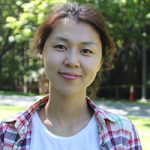National Postdoc Appreciation Week (NPAW) recognizes the significant contributions that postdoctoral scholars make to research and discovery. Centre for Blood Research (CBR) postdocs are an important part of our research community, who are crucial in driving scientific advancement and innovation.
In honour of this week, we spoke with Dr. Alex Leatherdale, Dr. Alison McAfee, Dr. Emily Park and Dr. Manoj Paul to learn more about them, their research, and what drew them to science.
Dr. Alex Leatherdale, Conway Lab & Pryzdial Lab

Dr. Alex Leatherdale
A sense of curiosity is what has always drawn Dr. Alex Leatherdale to science.
“Being able to tinker and satiate my curiosity is what I enjoy the most about research,” said Alex. “It’s a bit like working on puzzles all day.”
Now a Postdoctoral Research Fellow in the Conway and Pryzdial labs, Alex studies the interface between complement and coagulation. He is trying to understand how the complement system – part of innate immunity – can be triggered to attack the cells lining blood vessels, and how this in turn can lead to inflammatory changes and blood clots. It’s a topic that touches on wide-reaching health problems, since many diseases involving dysregulation of the complement system also involve blood clots and organ dysfunction. One of Alex’s current focuses is how the complement system and blood clotting are involved in COVID-19, although his work extends beyond studying the virus.
“Being able to tinker and satiate my curiosity is what I enjoy the most about research. It’s a bit like working on puzzles all day.”
Alex describes himself as “falling into” this research topic. At first, he wanted to pursue osteoarthritis research after studying skeletal biology in his undergraduate years, but slipped into a project that investigated interactions between platelets and collagens in the blood vessel wall. It was a semi-familiar area for him, since many collagens in blood vessels are the same as those in bones and cartilage. From there, his career took a natural progression into the fields of hemostasis and thrombosis.
“I used to think that science was all about using prescriptive rules to understand and predict how things work. But the more you get into research, the more you realize that isn’t true,” said Alex. “It’s deductive and uncertain, and involves coming up with the most accurate conclusion based on the best available evidence.”
Outside of the lab, Alex enjoys a wide range of fitness and musical pursuits, from weightlifting, to playing the drums and guitar, to cycling, to jamming with friends.
Dr. Alison McAfee, Foster Lab

Dr. Alison McAfee
For Dr. Alison McAfee, who studies honeybees, there’s no end to her fascination around these “very charming insects”.
Her research is focused on understanding how honeybee queens can keep sperm alive for extended periods of time in a specialized storage organ called a spermatheca. Previously, Alison analyzed queens’ spermathecal fluid, the protein concoction secreted by this organ. She used proteomics techniques to identify which proteins were associated with sperm viability during storage.
“Most animal sperm cells only last minutes or days outside of a male’s body, so it’s an incredible biological feat that honeybee queens can keep sperm alive for up to five years – that’s their maximum lifespan,” said Alison. “Since a queen only mates once in her life, with multiple males, it’s crucial that she can store sperm properly for later use.”
After studying biochemistry and ecology in her undergraduate years, Alison completed a PhD in Dr. Leonard Foster’s lab at UBC, which allowed her to pursue both fieldwork and labwork.
“Most animal sperm cells only last minutes or days outside of a male’s body, so it’s an incredible biological feat that honeybee queens can keep sperm alive for up to five years – that’s their maximum lifespan.”
“It was a great marriage of working directly with bee colonies outdoors, while still doing that nitty-gritty protein and DNA molecular analysis in a biochemistry lab,” said Alison.
Now a Postdoctoral Fellow, she is co-supervised by Dr. Leonard Foster at UBC and Dr. David Tarpy at the University of North Carolina. Together with collaborators in Brussels, she’s currently investigating whether other insects – bumblebees and black garden ants – have similar mechanisms for long-term sperm storage.
“If we can understand how honeybee queens and potentially other insects achieve this, it could help us develop ex vivo sperm storage systems that would be useful for studying sperm biology in general,” she explained.
When she’s not in the lab, Alison can be found hiking in the mountains, or at a nearby farm training horses.
Dr. Emily Park, Multi-Scale Design Lab

Dr. Emily Park
A single project in an engineering course is what led Dr. Emily Park down the path of biomedical research. The course, which Emily took as a third-year undergraduate at UBC, asked students to design a tool for knee replacement surgery, and completely changed Emily’s perspective on her discipline.
“I realized that engineering isn’t just about building cars or airplanes, or studying abstract concepts like fluid mechanics. It also has medical applications that can help people live better and healthier,” said Emily.
She’s now a Postdoctoral Fellow in the Multi-Scale Design Lab led by Dr. Hongshen Ma, where she’s spent much of her scientific career. In her work, Emily continues to tackle important healthcare problems from an engineering perspective.
“I realized that engineering isn’t just about building cars or airplanes, or studying abstract concepts like fluid mechanics. It also has medical applications that can help people live better and healthier.”
Her current project aims to shed light on signalling pathways that influence immune-related diseases. She is developing a technology that can quickly and accurately identify individual immune cells, as well as the protein messengers produced by these cells, called cytokines.
“Cytokines tell the immune system how to do its job, and affect processes like inflammation or antibody production,” Emily explained. “Immune cells can secrete many, many different kinds of cytokines. What I’m trying to do is create a tool that can tell me what kinds of cytokines are being produced, and which immune cells are producing them. Right now, there aren’t any technologies that can answer both of these questions at the same time. By understanding this, we can better understand how certain cells and cytokines are influencing immune-related diseases like cancer, and then develop more targeted treatments against such diseases.”
As for what inspires Emily about her work, she shared, “I love the idea of applying engineering principles and methods to medical problems that I can actually solve.”
Outside of the lab, Emily enjoys hiking, swimming and spending time with her two daughters and puppy, as well as any social activities!
Dr. Manoj Paul, Kim Lab

Dr. Manoj Paul
For Dr. Manoj Paul, pursuing scientific research had always been a dream of his.
“When I was a child, I just had so many questions about nature’s complexities, and how it worked,” Manoj said. “Chasing answers to those questions is what inspired me to study the biological sciences and basic science in general.”
After completing his PhD at the University of Mysore in India, Manoj came to UBC, where he now works as a Postdoctoral Fellow in the Kim Lab, studying signalling pathways in platelets.
“As a biochemist, I’m intrigued by the molecular patterns in cells. That’s what I truly enjoy: trying to understand the complexities of the building blocks of life.”
His work revolves around platelet granule exocytosis, the process through which platelets release packages called granules into the bloodstream. These granules contain important proteins that can influence bodily functions like inflammation, immunity, thrombosis and hemostasis. In particular, Manoj is interested in how two proteins, gelsolin and filamin A, interact with the platelet exoskeleton to control exocytosis, and in turn, how they regulate inflammation. Understanding this can shed light on inflammatory pathways involved in conditions such as gum disease or other illnesses.
“As a biochemist, I’m intrigued by the molecular patterns in cells,” Manoj said. “That’s what I truly enjoy: trying to understand the complexities of the building blocks of life.”
On the weekends, Manoj spends his time hiking around BC, combining his passion for the outdoors with his passion for photography. He tries to bring his camera wherever he goes to capture the scenery.
Thank you to all the postdocs who shared their stories with us! Learn more about UBC-held events for National Postdoc Appreciation Week 2021.


